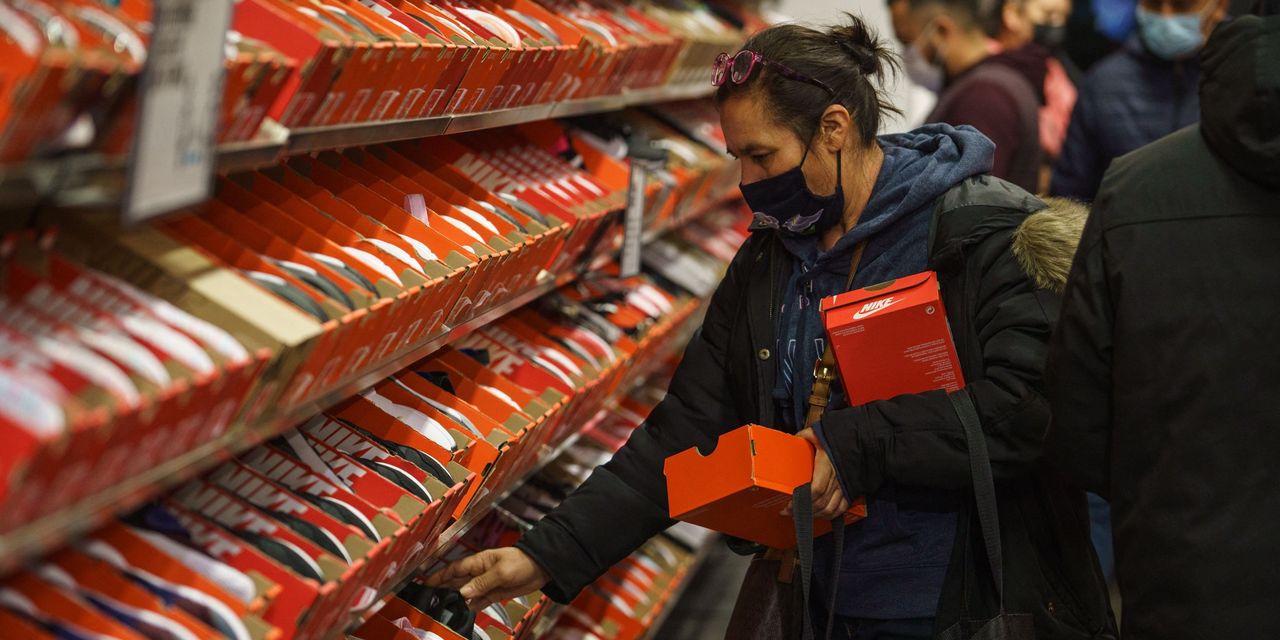
Global supply-chain constraints continue to hurt Nike Inc.’s NKE -2.71% sales. The sneaker giant reported for a second consecutive quarter that its growth was stunted by a slowdown in production and transportation of its goods around the world.
Nike posted revenue of $11.4 billion in the quarter ended Nov. 30, up 1% from the same period a year earlier. Analysts expected revenue of $11.2 billion.
Demand for Nike’s goods continues to outpace supply. The previous quarter Nike reported a 10-week delay in production because of a lockdown in Vietnam and said it expected flat revenue growth for the November quarter.
On Monday, Nike said revenue in China, Asia Pacific and Latin America declined mainly because of low inventory levels resulting from Covid-19-related factory closures. Local mandates in China to reduce the spread of Covid-19 affected operations of a quarter of Nike’s retail partners and half the factories that work with the company.
The company said measures to stop the spread of the virus in China continue to drive volatility in retail traffic but that it saw traffic recover to pre-pandemic levels at times throughout the quarter.
Nike executives said they expect the inventory situation to improve. The company said it forecasts growth to be in the lower single digits for the third quarter because of the continuing impact from lost production from pandemic-related disruptions in Vietnam. The lockdown in Vietnam caused Nike to cancel production of roughly 130 million units.
“Compared to ninety days ago we are increasingly confident supply will normalize heading into fiscal 2023,” Finance Chief Matthew Friend said on a conference call. Mr. Friend said that all factories in Vietnam were operational and production was at about 80% of what it was before the closures.
More than half of Nike’s footwear and about a third of its apparel manufacturing occurs in Vietnam, where Covid-19 cases had the highest daily average last week.
Nike’s net income for the November quarter was $1.3 billion, up 7% from a year earlier. Earnings per share were 83 cents, exceeding what analysts had projected.
Direct sales rose 9% to $4.7 billion. Digital sales increased 12%.
With the Omicron variant spreading quickly around the world, there is new uncertainty about whether port or factory closures could interfere with production or shipping schedules. Some countries are imposing restrictions to curb the number of infections.
“We’re going to continue to watch it closely like everyone else,” Mr. Friend said about the Omicron variant. He said given the consumer demand for Nike’s products he believes the company’s forecasts were reflective of what it sees in the intermediate term.
Nike last week said it acquired Rtfkt, a startup that creates nonfungible tokens, or NFTs, of sneakers and other collectibles. The company didn’t disclose the details of the deal. Nike also recently filed trademark applications indicating it wants to sell NFTs of its sneakers, clothing and other goods stamped with its swoosh logo.
Analysts say the moves speak to the company’s ambitions to quickly enter the market for virtual goods and reflect the acceleration of its digital strategy. It could also help Nike sidestep the supply crunch. Competitor Adidas AG launched a collection of NFTs last week and raked in about $23 million.
Write to Inti Pacheco at [email protected]
Copyright ©2021 Dow Jones & Company, Inc. All Rights Reserved. 87990cbe856818d5eddac44c7b1cdeb8
Appeared in the December 21, 2021, print edition.








